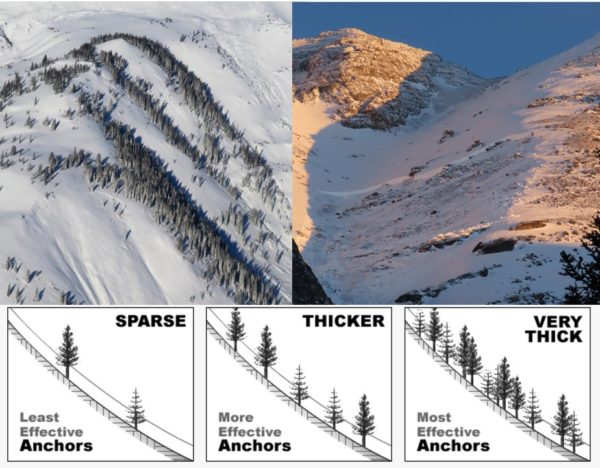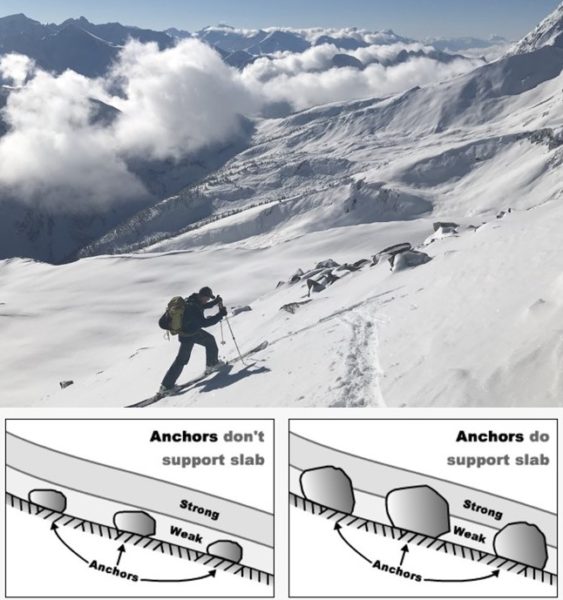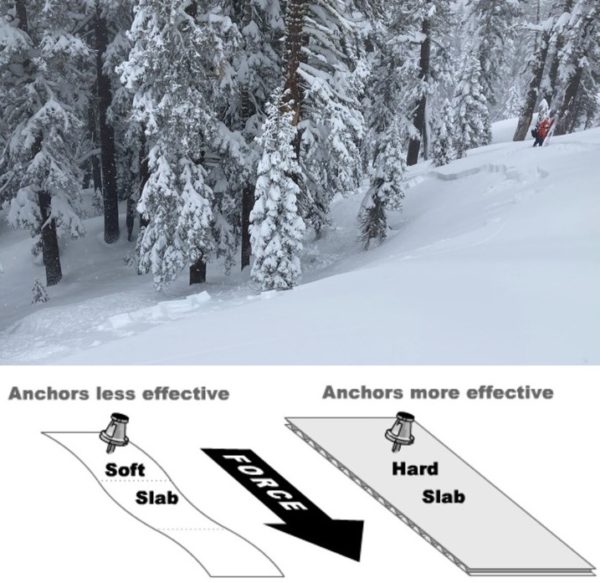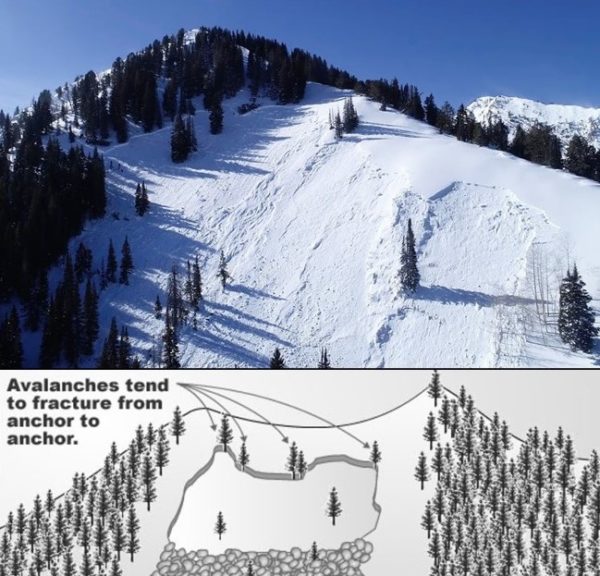Rocks, trees, or bushes that may add stability to a slope by disrupting the continuity of weak layers or protruding into the slab.
Anchors need to be densely distributed and penetrate through the snowpack to be effective. Trees with branches that reach into the snowpack (such as fir or spruce) act as better anchors than trees with few low branches (such as aspen or lodgepole). Sparsely spaced anchors or anchors that don’t penetrate well into the slab have little effect on stabilizing the snowpack. Once rocky ground cover gets smoothed over by snowcover, it’s best to assume those anchors are no longer effective. Anchors may hold hard slabs in place better than soft slabs–like the difference between cardboard and tissue paper when affixing them to a bulletin board with a thumbtack. Avalanche fracture lines tend to run from anchor to anchor because they are also stress concentration points. In other words, you stand a better chance of staying on the good side of a fracture line by standing above a tree instead of below.

Thicker canopies and branches are more effective anchors. Spruce and fir trees with branches frozen into the slab are much more effective anchors than a tree with few low branches such as an aspen or lodgepole pine. Also, snow falling off of evergreen trees tends to disrupt the layering and continuity of the snowpack, whereas deciduous forests often have more continuous slabs or weak layers. Credit: Crested Butte Avalanche Center

Anchors need to be thick enough to be effective. The more densely spaced, the more effective. Credit: Crested Butte Avalanche Center and Sawtooth Avalanche Center

Rocks that protrude through the snowpack are more effective anchors. Anchors that don’t stick up through the weak-layer and into the slab have no effect. Credit: Zach Guy

Anchors tend to hold thicker, harder slabs in place better than shallower, softer slabs–like the difference between cardboard and tissue paper when affixing them to a bulletin board with a thumbtack. This photo shows a soft slab breaking in a fairly well-anchored terrain. Credit: Sierra Avalanche Center

Crown lines often break below anchors. You have a better chance of staying out of an avalanche if you stay on the uphill side of anchors. Credit: Utah Avalanche Center
